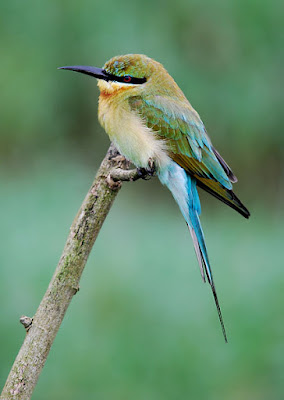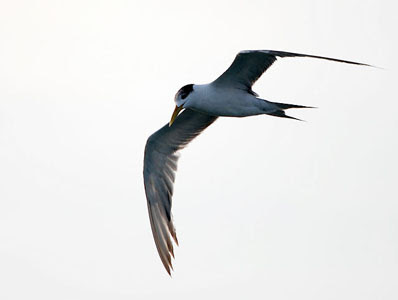It was a rather wet and gloomy morning as I entered the marshlands at
Pulau Burung. Weather of this nature does have its affect on both birder and birds. From the look of things, I could sure use a good cup of coffee and so could this Common Sandpiper.

Loud splashing along the river mouth diverted my attention temporarily away from the birds and the reason behind the commotion was a family of otters. The dim lighting and constant movement of these graceful animals prevented me from obtaining any real good shots.

It is good to see the resident Lesser Whistling-ducks are enjoying one successful season after another here. This is probably the last stronghold for this species in my home state of
Penang and that is pretty sad considering the fact it is quite common elsewhere.

I decided to stop my car next to a patch of slightly flooded red soil as I noticed there were quite a few Little Ringed Plovers foraging in the vicinity. It did not take long for them to get used to my car and I managed to capture some pretty decent shots as they gradually came closer.

Excitement grew when I picked out a few greyish-looking stints but they turned out to be Red-necked Stints (first winter birds, I think) and not the much rarer Temminck’s Stint as I had hoped for. Although Red-necked Stints usually occur along coastal habitats, they do sometimes show up inland, right fellas?
That was until Dave corrected me after I posted this blog entry because the wader in this photo is a Little Stint and finally, I can include this species into my life list without feeling any guilt. It is extremely difficult to distinguish the two species in the field especially in non-breeding plumage and the skills needed are perhaps just a little beyond me for now. Thanks, Dave.
Basically, the rarer Little Stint (much overlooked due to its similarities to the Red-necked Stint) has a somewhat thinner bill, longer legs, a smaller head that is positioned slightly higher on the body and rounder overall appearance.

The tide was just about right when I arrived at my second destination – the mudflats of Batu
Kawan. A rather confiding Pacific Golden Plover was a good enough reason for me to stop my car and waited for it to get accustomed to my presence. Judging from the images I obtained today, I must make it a point to visit this locality just before the next spring migration to catch this species in their outstanding breeding plumage.



This is one…

long…

worm…

I even managed to gain the trust of the usually wary Common
Redshank and it was
shortly after that I discovered the highlight of the day. I was so preoccupied with photographing these commoner waders that I almost miss my lifer – a
Grey-tailed Tattler, that I could not determine if it just came in or was there the whole time. Unfortunately, for some unknown reason, it did not stay long enough after I had it in my sights to obtain any images. Just a pretty good view of its wholly grey
upperparts as it was flying away from me. This is my second consecutive lifer (a first winter male
Blue-and-White Flycatcher last week) that has slipped past my camera but most fortunately, not my binoculars.

A lapse of concentration…

and this adult White-bellied Sea-eagle flies off hungry.

The paddy fields at
Kubang Semang did not provide much to ease my disappointment with the tattler until I came across a pair of Red Collared Doves foraging on some exposed mud. The male looks like a
subadult as it has yet to fully sport the splendid red plumage of an adult male.



The female is very plain looking and to an unwary birder, can be overlooked as a Spotted Dove. I must admit if not for the male bird, there is a high possibility I could have drove past the foraging pair.

The Pond-herons are back but not in usual high numbers yet.

Reflections of wings and inspiration – Great Egret…

I may not be much of an insect person but this striking dragonfly feeding on these snail eggs does make a rather interesting portrait.




































































